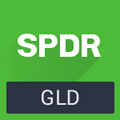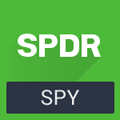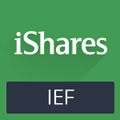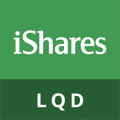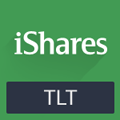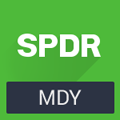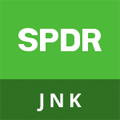This document has been compiled using indicators provided by the Market-Signals trading bot which studies global market data. This document shows the evolution of the strategies proposed by the bot and gives the trends of a selection of ETFs, which follow the main world markets, for November 2025. The strategies hold only long positions. No leverage is used. This document is for information purposes only and should not be taken as investment advice.
Global Market Breadth
| Market | Trend | Direction |
|---|---|---|
| US stock market |
|
|
| US bond market |
|
|
| US Treasuries |
|
|
| US Real Estate |
|
|
| Europe Equities |
|
|
| Japan Equities |
|
|
| Emerging Market Equities |
|
|
| Gold |
|

Portfolios
US Growth Portfolio
T
he portfolio US Growth continues its strong increase of 4.77% in October. We find a positive trend in the U.S. stock market, we assume a Risk-On market regime and the portfolio is allocated to a U.S. equity ETF. The asset allocation remains the same this month. The ETF selected in the portfolio for this month is QQQ (100%). The portfolio trend for November is measurably bullish with a Trend Score in progression of 7 out of 10. The level of risk of the strategy for this month is medium with a Risk Score stable of 4 out of 10.
The 1-year performance of this strategy is 13.46%. Since opening the portfolio at eToro in November 2019, the strategy has performed 166.05%, in comparison, the benchmark asset (S&P 500) has advanced 145.70%. The strategy has suffered a maximum loss of 19.95% since the portfolio opened at eToro, compared to the benchmark asset (S&P 500) which lost 23.91% at maximum.
This strategy captures the U.S. stock market growth for long-term investors who want high returns.
Since inception at eToro
Max drawdown
Since inception at eToro
Portfolio: -19.95%
S&P 500: -23.91%
- eToro portfolio
US Balanced Portfolio
T
he portfolio US Balanced continues its strong rise of 3.34% last month. The strategy combines an allocation in US bonds (30%) with the US Growth portfolio (70%). The trend in the US bond market for this month is bullish. The bond part contains the following 2 ETFs: LQD and BND. The portfolio contains the following 3 ETFs: QQQ (70%), LQD (15%) and BND (15%). The portfolio trend for this month is bullish with a Trend Score in growth of 6 out of 10. The level of risk of the strategy for November is low with a Risk Score steady of 3 out of 10.
The 1-year change of this strategy is 7.56%.
This strategy provides a balanced stocks and bonds allocation for investors who want a U.S. market exposure with limited risks.
Global Conservative Portfolio
T
he portfolio Global Conservative continues its strong increase of 3.33% in October. The Strategy combines a multi-market protective asset allocation strategy (Global Stable portfolio 70%) and a US stock market strategy (US Growth portfolio 30%). Asset allocation remains the same this month. The asset allocation is as follows: QQQ (41%), GLD (11%), VGK (11%), EEM (11%), EFA (11%) and EWJ (11%). The portfolio trend for November is bullish with a Trend Score in growth of 6 out of 10. The level of risk of the strategy for November is medium with a Risk Score stable of 4 out of 10.
The 1-year trailing return of this strategy is 8.93%.
This strategy provides a broad geographic diversification for investors who want an international exposure.
Global Stable Portfolio
T
he portfolio Global Stable continued to gain ground by 2.75% in October. The overall market trend for November is strongly positive. By analyzing a diverse multi-market composed of 12 Trackers (stocks, bonds, gold, real estate, international and emerging markets...), we observe that 12 securities show a positive evolution. Our model allocates 100% to Risk-On assets and 0% to Risk-Off assets. Asset allocation remains the same this month. The 6 Trackers of the portfolio for this month are GLD (16%), VGK (16%), EEM (16%), EFA (16%), EWJ (16%) and QQQ (16%). The portfolio trend for November is positive with a Trend Score in growth of 6 out of 10. The degree of risk of the strategy for November is medium with a Risk Score stable of 4 out of 10.
The 1-year performance of this strategy is 10.15%.
This is the safest strategy, the one with the lowest volatility and the least max drawdown of the 4 offered, that makes this strategy an alternative to a 1-Year Term Deposit.
ETF Trends
GLD SPDR Gold
- Gold
The GLD ETF, which replicates the performance of the price of gold bullion, continues its strong rise of 3.56% in October. The performance over a period of 1 year of this ETF is 45.45%. The trend in November is measurably bullish with a Trend Score constant of 8 out of 10. The level of risk of this ETF in November is high with a Risk Score in progression of 7 out of 10. This equity is present in the strategies Global Stable and Global Conservative in November.
EWJ iShares MSCI JAPAN ETF
- Japan Equities
The EWJ ETF, which measures large and mid cap segments of the Japanese market, holds out its strong increase of 4.04% in October. The 1 year trailing return of this equity is 22.06%. The trend in November is strongly positive with a Trend Score in rise of 7 out of 10. The level of risk of this equity in November is medium with a Risk Score in rise of 4 out of 10. This equity is present in the portfolios Global Stable and Global Conservative in November.
QQQ Invesco QQQ
- Nasdaq 100
The QQQ ETF from Invesco, which monitors 100 largest US companies in the non-financial sector, holds out its strong increase of 4.78% last month. The performance over a period of 1 year of this ETF is 30.23%. The trend in November is measurably bullish with a Trend Score in rise of 7 out of 10. The level of risk of this ETF in November is medium with a Risk Score constant of 4 out of 10. This Exchange-Traded Fund is invested in the portfolios US Growth, Global Stable, Global Conservative and US Balanced this month.
EEM iShares MSCI Emerging Markets ETF
- Emerging Market Equities
The EEM ETF, which replicates the MSCI Emerging Markets Index, continues its strong increase of 3.56% in October. The 1 year trailing return of this ETF is 25%. The trend in this month is measurably bullish with a Trend Score in growth of 7 out of 10. The level of risk of this ETF in November is medium with a Risk Score in decline of 4 out of 10. This ETF is present in the portfolios Global Stable and Global Conservative this month.
IWM iShares Russell 2000 ETF
- US Small Cap Equities
The IWM ETF, which follows small public U.S. companies, continued to grow by 1.76% in October. The evolution of the performance of this ETF over 1 year is 13.36%. The trend in November is positive with a Trend Score in growth of 6 out of 10. The degree of risk of this ETF in November is low with a Risk Score constant of 3 out of 10.
SPY SPDR S&P 500 ETF
- S&P 500
The SPY Exchange-Traded Fund, which monitors 500 largest US companies, continued to grow by 2.38% last month. The 1 year trailing return of this ETF is 20.07%. The trend in November is bullish with a Trend Score unchanged of 5 out of 10. The level of risk of this ETF in November is low with a Risk Score unchanged of 3 out of 10.
VGK Vanguard FTSE Europe ETF
- Europe Equities
The VGK ETF, which replicates the major markets of Europe, continued to gain ground by 0.63% last month. The performance over a period of 1 year of this ETF is 19.40%. The trend in November is positive with a Trend Score in growth of 4 out of 10. The degree of risk of this ETF in November is low with a Risk Score stable of 3 out of 10. This Exchange-Traded Fund is invested in the portfolios Global Stable and Global Conservative in November.
EFA iShares MSCI EAFE ETF
- Europe, Australia and Far East Equities
The EFA ETF from iShares, which monitors a broad range of companies in Europe, Australia and the Far East, continued to grow by 1.20% in October. The 1 year trailing return of this ETF is 18.99%. The trend in November is positive with a Trend Score in progression of 4 out of 10. The degree of risk of this ETF in November is low with a Risk Score constant of 3 out of 10. This Exchange-Traded Fund is present in the strategies Global Stable and Global Conservative in November.
IEF iShares 7-10 Year Treasury Bond ETF
- Intermediate-term US Treasuries
The IEF ETF from iShares, which replicates intermediate-term U.S. Treasury bonds, continued to gain ground by 0.40% in October. The performance over a period of 1 year of this ETF is 2.13%. The trend in November is weakly bullish with a Trend Score stable of 3 out of 10. The level of risk of this ETF in November is low with a Risk Score stable of 1 out of 10.
BND Vanguard Total Bond Market ETF
- US Total Bond Market
The BND ETF from Vanguard, which measures a wide variety of US government and US corporate bonds, continued to gain ground by 0.28% in October. The 1 year trailing return of this ETF is 1.37%. The trend in this month is lightly positive with a Trend Score in regression of 3 out of 10. The level of risk of this ETF in November is low with a Risk Score steady of 2 out of 10. This ETF is present in the portfolio US Balanced in November.
LQD iShares iBoxx $ Investment Grade Corporate Bond
- US Corporate Bonds
The LQD Exchange-Traded Fund, which tracks a broad range of U.S. investment grade corporate bonds, receded 0.22% in October. The 1 year trailing return of this ETF is 2.78%. The trend in November is weakly positive with a Trend Score unchanged of 3 out of 10. The degree of risk of this ETF in November is low with a Risk Score in decline of 1 out of 10. This ETF is invested in the strategy US Balanced this month.
TLT iShares 20+ Year Treasury Bond ETF
- Long-Term US Treasuries
The TLT ETF, which measures the long-term sector of the U.S. Treasury market, continued to gain ground by 1.03% in October. The evolution of the performance of this equity over 1 year is -2.17%. The trend in November is lightly positive with a Trend Score steady of 3 out of 10. The degree of risk of this equity in this month is low with a Risk Score steady of 3 out of 10.
MDY SPDR S&P Midcap 400
- Midcap 400
The MDY ETF from SPDR, which replicates mid-cap U.S. Equities, receded 0.51% in October. The evolution of the performance of this ETF over 1 year is 4.78%. The trend in November is weakly positive with a Trend Score constant of 3 out of 10. The level of risk of this ETF in November is low with a Risk Score constant of 3 out of 10.
VNQ Vanguard Real Estate ETF
- US Real Estate
The VNQ Exchange-Traded Fund, which monitors REITs and other real estate-related investments, fell 2.45% in October. The performance over a period of 1 year of this equity is -5.32%. The trend in November is lightly positive with a Trend Score in decline of 2 out of 10. The degree of risk of this equity in this month is low with a Risk Score stable of 3 out of 10.
JNK SPDR Bloomberg High Yield Bond
- High Yield Bonds
The JNK Exchange-Traded Fund, which follows US high yield bonds, receded 0.61% last month. The 1 year trailing return of this equity is 1.04%. The trend in this month is weakly positive with a Trend Score constant of 2 out of 10. The degree of risk of this equity in November is low with a Risk Score constant of 1 out of 10.
Compliance disclaimer
This communication is for information and education purposes only and should not be taken as investment advice, a personal recommendation,
or an offer of, or solicitation to buy or sell, any financial instruments.
Natevia makes no representation and assumes no liability as to the accuracy or completeness of the content of this publication,
which has been prepared utilizing publicly-available information.
Past Performance is not indicative of future results.
